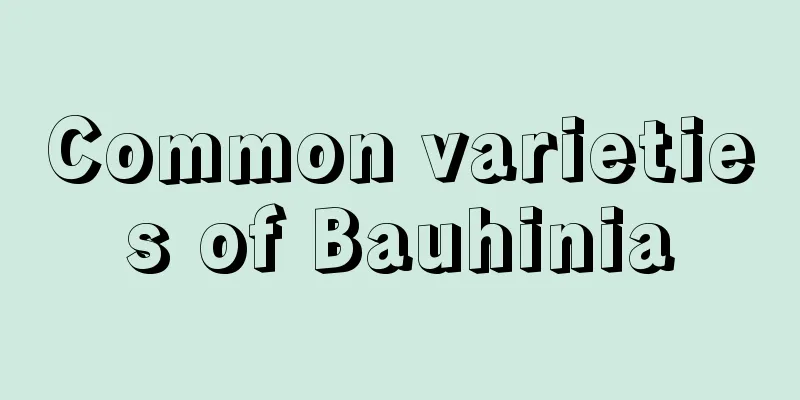Common varieties of Bauhinia

Bauhinia leucophyllaWhite Bauhinia is a variant of Bauhinia with white flowers. A shrub that grows in clusters or solitary, 2-5 meters high; bark and twigs are grayish white. The leaves are papery, nearly round or triangular-round, usually glabrous on both sides, young leaves are green, and only the petioles are slightly purple. Bauhinia grandifloraGiant Bauhinia is a deciduous tree or large tree. The average plant can grow up to 30 meters. It is an excellent native tree species with great ornamental value discovered in recent years. The leaves of Bauhinia giant are alternate, entire, heart-shaped or nearly round, with branches that are soft and drooping, dense and flowing. The calyx is purple-red and shaped like a purple butterfly, with flowers blooming before leaves. The flowers are viewed in spring, the inflorescence is large and dense, and the colors are bright. The leaves are dense, heart-shaped, round and shiny in summer. When viewing the fruits in autumn, you will see large pods, which are green when they first appear, and reddish brown when ripe. They are flat and long, with slightly pointed ends. When viewed in winter, the fallen leaves are more luxuriant, the trunk is upright, the bark is agate gray, and the branches are swaying. Cercis tuftilisClustered Bauhinia is a cluster of Bauhinia, which can reach a height of more than 4 meters, with a crown width of 100-300 cm and generally 5-10 branches. Canadian RedbudThe plant is about 4-5 meters tall, and the branches are black-gray with light-colored lenticels. The new leaves are purple-red, and the old leaves are copper-brown in the summer in a sunny environment. If there is insufficient light, they will turn green-brown, and turn red in autumn. The back of the leaves is light pink. The flowers bloom before the leaves, and 4 to 10 flowers are clustered in short racemes. The flowers can bloom on old trunks, new branches, and short branches. The corolla is butterfly-shaped and rose-red. The flowering period is April. The pods are linear and flat, and turn reddish-brown when mature in August or September. They contain nearly round seeds, but the fruiting rate after flowering is not high. The flower stalks of Canada red-leaf redbud are long and the flowers are sparse. Unlike the common redbud, which are densely packed in clusters and bloom close to the trunk, the flowers are slightly drooping and bloom in a sparse and dense manner. |
<<: Cultivation methods and precautions of Hellebore
>>: Ruogeshi family breeding methods and precautions
Recommend
Yellowing leaves is not a big deal, it can be solved in 1 minute
Yellowing leaves of asparagus fern Main reason: t...
What are the cultivation methods and precautions of Dripping Guanyin?
How to cultivate dripping guanyin The weeping ang...
Cultivation methods and precautions of white orchid
1. Soil It is recommended to use loose, fertile, ...
How to grow the succulent plant Takasago
1. Potting soil It is recommended that the soil f...
How to prune Kyoho grapes
When to prune Kyoho grapes Kyoho grapes are prune...
How to grow Monstera
1. Maintenance conditions 1. Water: Monstera requ...
What to do if the leaves of Spathiphyllum are short
1. Supplement sunlight Reason: Generally, the lea...
Is it good to grow flowers in resin pots?
1. Are resin flower pots good? In fact, there is ...
How to cultivate Hachiyodai succulents
Hachiyo Succulent Growth Conditions Hachiya succu...
How to water the Money Tree correctly?
In the process of caring for the money tree , we ...
Key points for the maintenance of morning glory in four seasons
Spring and summer care of morning glory Spring ca...
What to do if the spring grass doesn't curl? Can I cut the leaves?
1. What to do if you don’t want to roll 1. Change...
Mix these two things together and use them to grow Clivia, and the flower buds will appear in winter!
Huahua wants to talk about Clivia today. Clivia i...
How to grow dahlias
1. Soil It is best to choose loose and well-drain...
Complete list of Epiphyllum varieties
Epiphyllum scutellaria The fine-leaved Epiphyllum...









